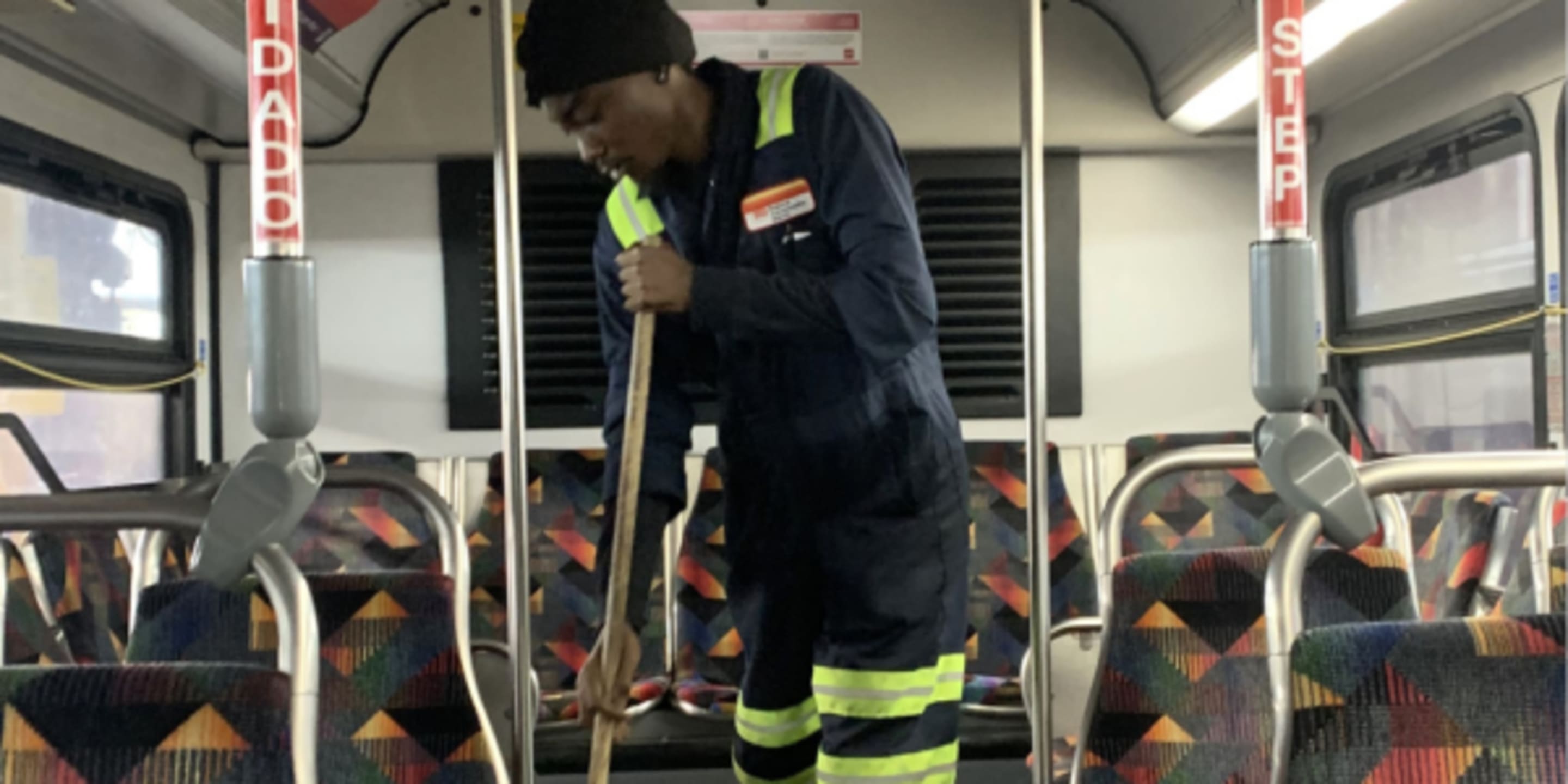
Ever wondered how RTD's buses are cleaned? It takes many hands
As the last buses complete their daily runs and return to their division, the operator’s workday comes to an end. Yet behind the scenes, another dedicated team is just getting started.
From conducting inspections and repairs to refueling and cleaning, it takes a large workforce to guarantee that every bus is ready for service by morning.
“It’s a repeated cycle, every single day,” said Sangman Yoon, General Superintendent of Maintenance. “We certify that the buses are safe and ready to go for the next day. About 99% of the decision comes from the repair shop.”
When operators arrive at the division, they conduct and document their post-trip inspections on what’s called a Driver’s Vehicle Inspection Report (DVIR). This essential checklist covers key safety items such as tires, mirrors, leaks and overall body condition. That form is then handed over to RTD’s maintenance team.
Yoon notes, “Post-trip is important. The DVIR gives us a snapshot of anything that needs attention right away.”
Should any issues be noted on the DVIR, the affected buses are directed to a “Beef Row,” where mechanics promptly address everything from minor repairs, like a wiper blade replacement, to more significant mechanical concerns.
“We keep note of anything that’s logged,” Platte Division Maintenance Manager Kevin Prior said. “We either handle it that day or stage the bus in a designated area that indicates it needs maintenance work.”
Members of the Service and Cleaning crew also play a vital role in preparing the bus for its next trip. At the service island, every bus is refueled every night. Since buses do not have fuel gauges, topping off the tank is nonnegotiable.
While fueling, the team sweeps, mops, dusts, wipes down surfaces with disinfectant and removes trash, ensuring the fare box is emptied as well. Two Service and Cleaning team members touch each bus every day for eight minutes apiece.
“We do a quick reset, so the bus feels fresh when it goes back out,” said Service and Cleaning Supervisor Dawn Glenn, a self-described “clean freak” who has been with RTD for close to nine years. “There’s a lot of detail work. We check all the buses and make sure they look good for both the operators and customers.”
From there, buses pass through the wash bay for a nightly rinse before being parked in their designated spots and assigned a route and pullout time based on bus type. This process repeats every evening, ensuring that every bus returning from service is well cared for.
Some team members are dedicated just to interior cleans. When those occur, a standard 40-foot bus takes four hours of detail work. A longer, articulated bus takes eight. Upholstery cleans take two or four hours, depending upon the length of the bus.
Winter is the hardest season to clean in, Glenn said, because of the magnesium chloride spread on surfaces in inclement weather. While the floors are scrubbed every day, the chemical substance tracked into the buses leaves behind a white stain that comes off over time – but leaves people in the meantime to perceive that the floors are dirty.
In addition to the daily routine, buses undergo a preventative maintenance inspection and repairs every 6,000 miles in the shop, as well as scheduled component change outs to prevent any failures on the road.
“There are a lot of hands on one bus before it goes back out,” Yoon said. "But that’s what it takes to keep them safe and dependable for our operators and customers.”
Watching a line of dirty buses queue up to be refreshed is a sight to behold. The pace picks up in the evening, in the 6 o’clock hour, and again at midnight.
What does Glenn want the public to know about this work?
“I wish they would understand that we put a lot of effort into cleaning,” she said. “When someone had a mess on the floor, that bus is brought back and cleaned right away, and it’s back out on the road.
“Buses are cleaned on a daily basis, no matter what. Rain, snow, sunshine – it gets done.”